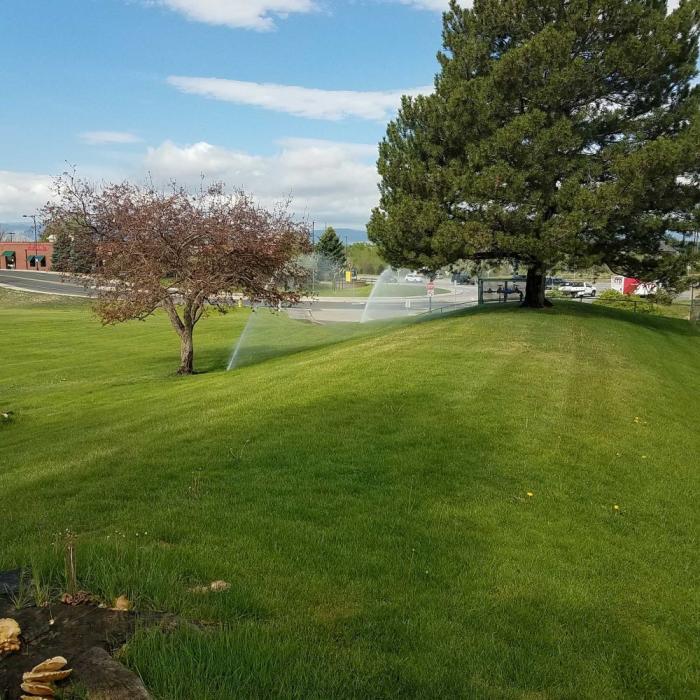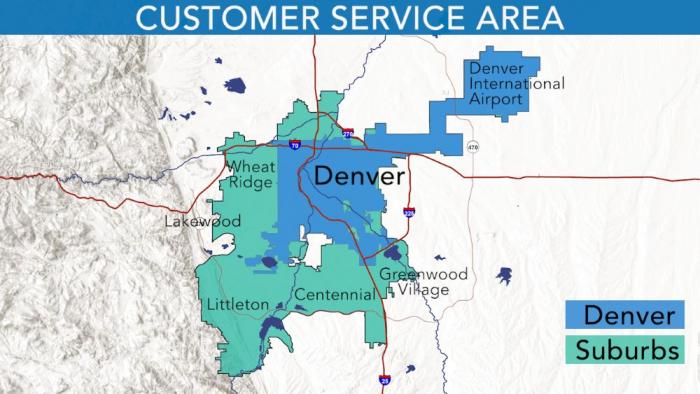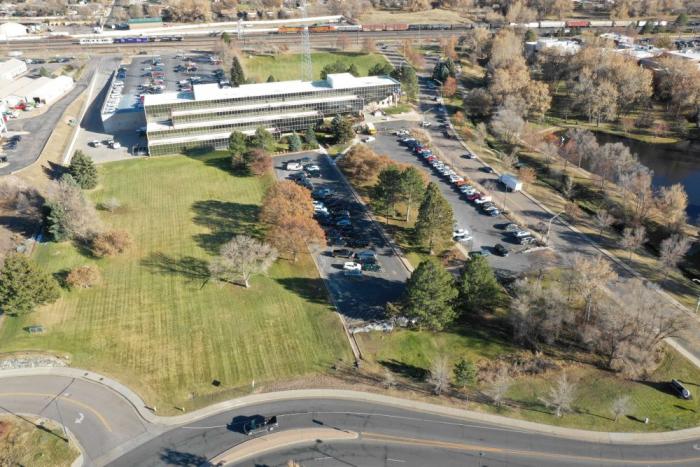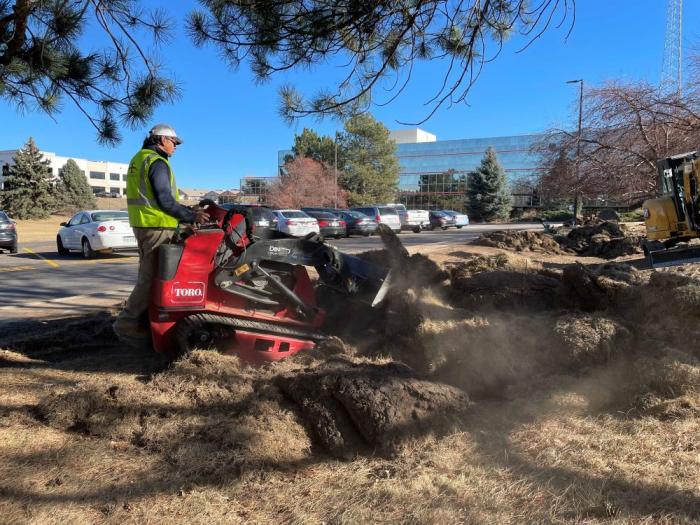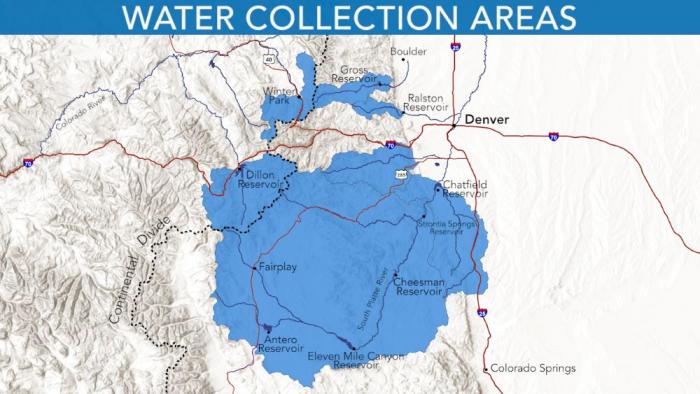Going back to their roots to prepare for the future
A landscaping makeover is underway in Littleton, where Arapahoe County is converting three acres of Kentucky bluegrass into a field full of nonirrigated prairie grass on the west side of its Administration Building on South Prince Street.
The project is expected to save an estimated 1.5 million gallons of water annually once the prairie grass is established and the field no longer needs irrigation.
“Arapahoe County is just beginning work on a water action plan that will drive our water efficiency efforts over the short and long term,” said Dawn Smith, manager of Arapahoe County’s Energy Program. “The grass conversion project at the Administration Building is one example of how we plan to reduce our water consumption, both outdoors for irrigation and indoors within our buildings.”
The county’s goal with the water action plan is to reduce landscape water by 13% over the next five to 10 years from a baseline established in 2019.
Saving water also has the parallel impact of helping the county’s overall operational goals of being fiscally responsible, by saving money on its annual water bill.
The bluegrass field has been part of the Administration Building’s landscape for many years.
On the building's west side, the bluegrass field is rarely used by the public for recreation. But since the public does use the east side of the building for recreation, the east side will not see any changes to the grass as part of this project.
Both factors made the west side’s 3-acre turf field a prime location for converting to prairie grass.
“We’re looking for ways to practice sustainability, so we can do our part to protect the environment,” Smith said. “This project and others will give the county a strong and visible demonstration of our efforts to be part of the solution to the state’s growing water crisis.”
The building is served by Denver Water, which has been delivering water to the city of Littleton since the 1960s.
“This conversion shows great leadership by the county,” said Greg Fisher, manager of demand planning at Denver Water. “They are highlighting a need to rethink landscapes to be more prepared for a warming climate and saving water at the same time.”
Work on the project started in mid-December 2021 and will last through fall 2022.
The project includes planting prairie grass seed on the field during the spring. The seeds will be watered in late spring and early summer until the new grass plants are established. Once they are established in the fall, the plan is to stop watering the field completely.
The county sought advice from Dr. Tony Koski, a turf grass expert with Colorado State University’s Extension program who works with businesses, homeowners associations and local governments across the state on landscaping projects.
“In the past, many people looked at Kentucky bluegrass as the only option for a field, but now there is more awareness about alternative grasses that may be a better fit for a particular site,” Koski said. “I always ask people, ‘What will the area be used for?’ And in the case of Arapahoe County’s field that isn’t being used for recreation, it makes sense to switch it to prairie grasses, which require much less water.”
Kentucky bluegrass may require up to 2.5 inches of water per week during hot summer months, compared to native prairie grasses, which can survive on what Mother Nature provides in the semi-arid climate of Colorado’s eastern plains.
“There’s always a learning curve with new landscaping practices, but they’ve done a good job preparing for this project,” Koski said. “Everyone should have patience with the project, and I look forward to seeing how it goes and hope others can learn from what they do.”
The changes mean the field will look much different from the expanse of green grass that has been on the site for decades. But the project will actually return the field to how it looked before people moved to the area and started irrigating the land.
“Visitors and our employees can expect to see a mixture of knee-high grasses that are native to Colorado and reflect the beauty that is original to the Littleton area,” Smith said.
The conversion also helps prepare the field in the event Denver Water implements watering restrictions in the future.
Prairie grasses have adapted to survive with less water while a bluegrass field would look stressed and unhealthy.
The cost of the turf conversion is $50,000, and the county is also spending $155,000 to update its 40-year-old irrigation system to make it more efficient on both the east and west sides of the building. The county expects to recover the cost of the turf conversion over time due to savings on irrigation.
New “bubbler”-style sprinkler heads will water existing trees more efficiently. And on the east side of the building, where an existing bluegrass field is regularly used for recreation by nearby residents, the bluegrass will benefit from a new, more efficient irrigation system.
Work on the irrigation system started in mid-December 2021, is expected to run through February 2022, and will involve replacing some of the main irrigation lines that were prone to leaks.
Smith said the county is trying to do its part to use money wisely, while also doing its share to help the Colorado Water Plan, which calls for reducing municipal and industrial water consumption statewide by 400,000 acre-feet by 2050.
“While our savings is only a drop in the bucket in terms of the entire state’s water consumption, it’s a good start for our water action plan,” Smith said. “We hope to take what we learn at the Administration Building and apply it to other county-owned properties.”
By saving 1.5 million gallons, Arapahoe County is saving 4.6 acre-feet of water every summer. One acre-foot is considered enough water to supply four residential homes for one year.
“We hope that people in our community will stop by and check out the new field and learn about the benefits of converting bluegrass to native grasses,” Smith said. “This project will help us save water where it’s not needed so it can be used where it is needed, such as in homes and for crops.”
Denver Water collects its water from the South Platte River Basin and tributaries of the Colorado River. The ongoing drought across the West and issues surrounding the Colorado River affect water supply for customers up and down the Front Range.
“Water is a scarce resource in Colorado, so we fully support Arapahoe County’s efforts to reduce their water consumption,” Denver Water’s Fisher said.
“The county’s efforts to choose the right landscape for the intended purpose will help Denver Water ensure long-term water reliability in the face of climate change, population growth and droughts.”



